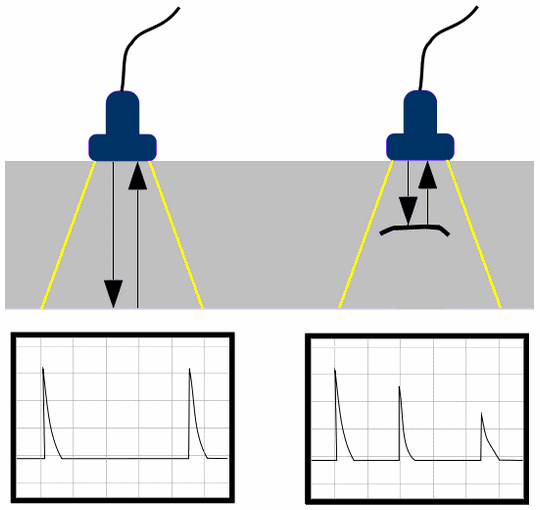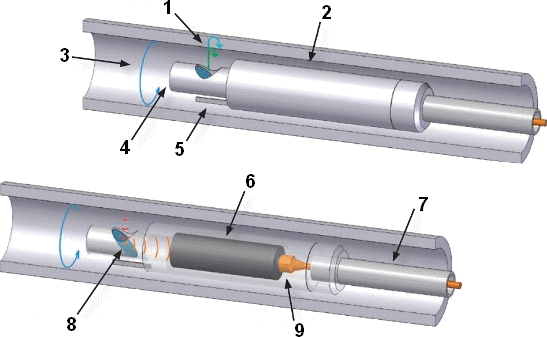Leak testing of industrial installations
By testing for leaks and actively detecting them, potential problems can be identified early. This leads to reducing safety risks, minimizing production losses, ensuring product quality, preventing environmental damage and realizing cost savings.
What Is Leak Testing?
Leak testing is a procedure used to determine whether an object or system is operating within a specific leakage limit and to check for leaks, which may allow fluids or gases to escape.
This involves pressurizing a system or component with a gas or liquid and then checking for a drop in pressure, which could indicate a leak.
There are different methods for leak testing, each with its own advantages depending on the specific application. During leak testing procedures, different types of defects are checked, such as cracks, holes, inadequate seals and other defects that can lead to the escape of gas or liquid.

Leak Testing Methods
Hard vacuum test
The hard vacuum test with helium as a tracer gas is the most accurate method to test a product for leaks. This test can be performed with active helium supply or with products pre-filled with helium.
In this method, the test object is placed in a vacuum chamber and any leaks are detected by observing changes in the vacuum level. This test is suitable for detecting small leaks in sealed components.
Pressure Decay test
Pressure decay leak testing is the most widely used method. Its simplicity makes it easy to automate and integrate into manufacturing/assembly processes.
How it works: The pressure decay test fills a pressure vessel with air until it reaches the target pressure, shuts off the air source to isolate the pressure, and measures the decay (loss) of that pressure over a specified period of time; a pressure loss greater than a predetermined setting indicates a leak.
Bubble Test
The bubble leak test is a method used to identify and locate leaks in packages or containers and can be used as a seal integrity test.
The test sample is immersed in a liquid, usually water, and then a vacuum or pressure difference is applied. Leaks in the sample allow air or gas to escape, creating visible bubbles in the liquid.
This simple visual indication of a leak makes the bubble test leak method an accessible and simple choice for many industries to test packaging quality.
Accumulation Trace Gas Leak Testing
The accumulation method using trace gas, usually helium or forming gas (hydrogen/nitrogen mixture), is a good compromise between the highly sensitive vacuum integral method and the cost-effective pressure change methods using air.
In these two measurements, the test piece is filled and measured in the same area. In this method, a simple accumulation housing is used to form a test space outside the test piece. Within this housing, the increase in the trace gas concentration is measured under atmospheric pressure over a period of time X. This allows significantly smaller leaks to be detected. It allows, for example, leak testing of welded or otherwise heat-treated objects.
Inside-out helium vacuum chamber leak testing
Inside-out helium vacuum chamber leak testing is a technique used to detect leaks in a vacuum chamber by introducing helium gas into the chamber and checking for helium leaks using helium mass spectrometry.
The chamber is pressurised with helium gas from the inside and a vacuum is created on the outside. If there are leaks, helium gas escapes into the vacuum and can be detected by the mass spectrometer, indicating the location of the leak.
Tracer Gas Leak Testing
Tracer gas leak testing is a simple and highly efficient method of leak detection that provides high sensitivity, accuracy and repeatability.
Tracer gas leak testing can be used to test components with very low leak rates that are outside the range of conventional airflow pressure decay and mass flow testing, or to replace bubble testing methods
Helium is the most widely used tracer gas in leak detection. It is non-flammable, non-destructive, non-toxic. Helium can be used at 100% concentration or mixed with another gas, such as nitrogen or dry air.
Helium Sniffing Leak Test
The helium sniffing leak test is a method that uses helium as a tracer gas in combination with instrumentation that can detect the presence of helium in the environment and more specifically an increase in helium through a leaking component.
Generally, sniffer leak detection is used to locate leaks in components or systems so that they can be identified and repaired where possible. This test method is not quantitative, as it is the skill of the operator that can determine whether a leak is found.
The principle of helium sniffing leak detection is to increase the internal pressure in a component above ambient pressure. With helium in the internal volume, a sniffer probe is used to investigate the most likely source where a leak could exit the component (e.g. welded joints or sealing positions).
Dye Penetrant Leak Testing
This method involves applying a dye to the surface of the test object, which penetrates into any surface defects or cracks.
After a certain time, excess dye is removed and any leaks are revealed by the presence of colored dye.
Ultrasonic Leak Testing
When leaks occur in pressure systems, such as compressed air or gas systems, the leak will emit a sound at a frequency higher than that which can be detected by the human ear. Ultrasonic leak detection uses advanced sound emission technology to identify and locate these leaks, which is achieved by detecting the high-frequency vibrations occurring in the air or medium at the source of the leak.
Ultrasonic leak testing is extremely useful to support predictive maintenance operations, as these often small leaks are an indication of larger operational problems to come, including drops in efficiency, as well as safety issues and complete system shutdowns.
Leak Testing Considerations
Acceptable leak rate
It is important that inspection and service personnel know the acceptable leak rate for an object or system when performing leak tests.
Not all leaks require maintenance: some only require continuing monitoring or even no action at all. Different industries typically have standards with acceptable leak rates for different products and substances.
Material Considerations
The material from which the object is made affects a leakage test and must be considered.
If a material is too brittle or malleable, these properties will be directly related to how the introduction of pressure will change the object, causing it to expand or change shape in a different way, which should be considered when planning a leak test.
Manufacturing Considerations
Keep in mind the original purpose and design of the object or system; manufacturers may have designed it to trap or allow substances to pass through, which will affect the approach to leak testing.
Medium Considerations
The substance an object contains should be considered when planning a leakage test.
Different substances have different molecular sizes. When performing a leak test, it is important to know the size of the defect that is acceptable and the size that would be large enough for a specific liquid or gas to escape.
A related consideration is pressure, as different substances react differently to different pressure ranges. Too high a pressure range could potentially damage the object under test, while too low a pressure range could produce incorrect results.
Leak Testing Equipment
For all the above-mentioned leak tests, countless devices in various configurations are available.
This article gives no further information about the leak testing equipment, because it would otherwise become a list of brand names and performing companies.
Leak Testing Standards and Codes
ASME B31.3 Pressure Testing
ASTM E1003 Standard Practice for Hydrostatic Leak Testing
ASTM E432 Standard Guide for Selection of a Leak Testing Method
ASTM E493 Standard Practice for Leaks Using the Mass Spectrometer Leak Detector in the Inside-Out Testing Mode
ASTM E499 Standard Test Methods for Leaks Using the Mass Spectrometer Leak Detector in the Detector Probe Mode
ASTM A1047 Standard Test Method for Pneumatic Leak Testing of Tubing
STM E1603 Standard Practice for Leakage Measurement Using the Mass Spectrometer Leak Detector or Residual Gas Analyzer in the Hood Mode
ASTM F2164 Standard Practice for Field Leak Testing of Polyethylene (PE) and Crosslinked Polyethylene (PEX) Pressure Piping Systems Using Hydrostatic Pressure
ASTM F2786 Standard Practice for Field Leak Testing of Polyethylene (PE) Pressure Piping Systems Using Gaseous Testing Media Under Pressure (Pneumatic Leak Testing)
ASTM E2930 Standard Practice for Pressure Decay Leak Test Method
ISO 2048 4Non-destructive testing - Leak testing
ISO 20485 Non-destructive testing - Leak testing - Tracer gas method
ISO 20486 Non-destructive testing - Leak testing - Calibration of reference leaks for gases
ISO 27895 Vacuum technology - Valves - Leak test
In short, leak testing plays a crucial role in ensuring the safety, reliability and performance of various systems and components in different industries. By quickly detecting and addressing leaks, you can prevent potential hazards, minimise downtime and extend equipment life.











